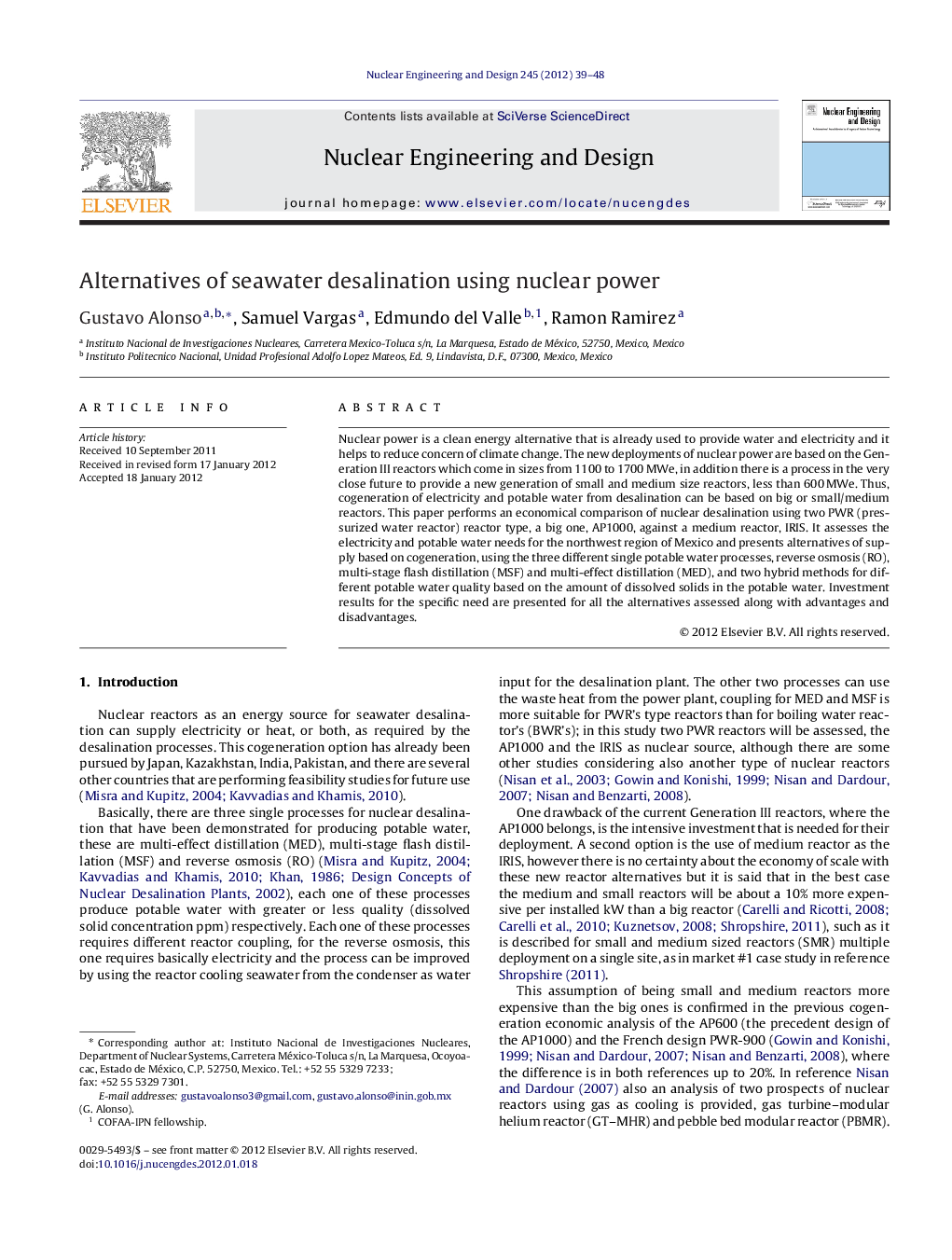| Article ID | Journal | Published Year | Pages | File Type |
|---|---|---|---|---|
| 297307 | Nuclear Engineering and Design | 2012 | 10 Pages |
Nuclear power is a clean energy alternative that is already used to provide water and electricity and it helps to reduce concern of climate change. The new deployments of nuclear power are based on the Generation III reactors which come in sizes from 1100 to 1700 MWe, in addition there is a process in the very close future to provide a new generation of small and medium size reactors, less than 600 MWe. Thus, cogeneration of electricity and potable water from desalination can be based on big or small/medium reactors. This paper performs an economical comparison of nuclear desalination using two PWR (pressurized water reactor) reactor type, a big one, AP1000, against a medium reactor, IRIS. It assesses the electricity and potable water needs for the northwest region of Mexico and presents alternatives of supply based on cogeneration, using the three different single potable water processes, reverse osmosis (RO), multi-stage flash distillation (MSF) and multi-effect distillation (MED), and two hybrid methods for different potable water quality based on the amount of dissolved solids in the potable water. Investment results for the specific need are presented for all the alternatives assessed along with advantages and disadvantages.
► Cogeneration is economically assessed using two different size nuclear reactors. ► Mexican northwest region was the case for economical comparisons of cogeneration. ► Medium size nuclear reactors provide more flexibility to meet coupling demands. ► Although there is a higher overnight cost for medium size reactors, they are cost competitive. ► Cogeneration alternative using medium size reactors is less expensive.
